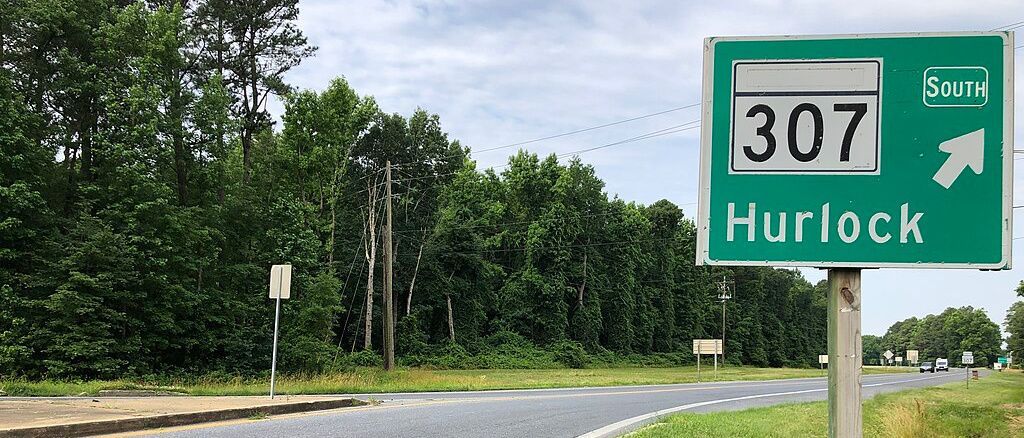Where are the Tundra Swans?

On a cold, snowy, winter night about 20 years ago, shortly after moving to my home in western Sussex County, Del., I woke to what sounded like an injured dog howling in pain.
Throwing on shoes and a coat, I circled the property line near the highway and seeing no signs of an injured animal, then circled my yard. As I approached the edge of Collins Pond, abutting my property, I saw hundreds of white moving objects in the bright moonlight.
They turned out to be hundreds of elegant Tundra swans calling to each other in loud, high-pitched honks, clattering across the water’s surface with wings beating, and finally settling in for the night.
The Tundra swan has a wingspan of about 70 inches and weighs 16 pounds for males and 14 pounds for females. In flight, the rhythmic flapping of their wings produces a tone that earned them the additional name of Whistling swan.
In the morning, they could first be seen in groups with their bills under their wings, and after awakening, dipping their heads underwater to pluck aquatic plants, tubers, and roots. During the day, they plundered grains and corn from the farm across the highway. They returned to the pond each night and stayed for a few weeks until late winter before departing for their breeding grounds north of the Arctic Circle.
On Collins Pond, in the last 20 years, their numbers have appeared to dwindle each year until the last five years, to only five or six swans visiting for only a few days. I was curious why this was happening.
The Atlantic Flyway
The Atlantic Flyway hugs the eastern coastline from the Canadian territory of Nunavut and the Newfoundland maritime provinces all the way south to Puerto Rico and the U.S. Virgin Islands.
The Tundra swan’s southerly migration begins in mid-October when family groups start their approximately 2,000-mile flight south through the Canadian provinces and multiple U.S. states. The swans along the Atlantic coast winter from Maryland and Delaware to South Carolina.
As long as weather conditions are favorable and food is plentiful, they winter in Delaware during November and December to as late as January or February, near marshes, shallow saline lagoons, sheltered coastal bays and estuaries, and ponds.
In the spring, their migration reverses. Stop-over sites to rest and renourish can be from New York to anywhere else along the way to the tundra breeding grounds in Nunavut, the northern reaches of North America and Canada, and the arctic and subarctic tundra. When they reach the tundra in early March to late June, it is summer. After the breeding season, the migration cycle to southern states begins again.
Believed to mate for life, Tundra swans pair up for nearly a year before breeding in large flocks in their summer grounds in pairs spread across the tundra. Each couple defends a territory of about three-fourths of a square mile. They build stick nests lined with moss and grasses near a pond or other water source.
Females typically lay four eggs and incubate them for 32 days, while males guard the nest from predators such as foxes and jaegers — rapacious seabirds — that pursue weaker birds. Both parents care for the young, which usually hatch in late June. The breeding season is subject to the arctic climate, and an early freeze or late spring may cause significant reproductive problems.
The Tundra swan, Cygnus columbianus, is large with pure white plumage and a black bill except for a yellow spot, often hard to see or absent, below the eye. Compared with other swans, Tundras have a relatively short neck which can give them the appearance of a large white goose.

Trumpeter swans, Cygnus buccinator, are often confused with Tundra swans. They are very similar in appearance, but much larger than the Tundras and have a larger bill, which is all black. They are rare in Delaware, but are being spotted more often.

The Mute swan, Cygnus olor, is also similar in appearance to the Tundra swan. This swan has white plumage and an orange beak with a pronounced knob. The Mute swan is a non-native, invasive species in Delaware.

In Search of Answers
Because the numbers of Tundra swans stopping over on Collins Pond has dwindled each year, as an amateur sleuth I went in search of answers.
Gary Macy, a gamebird biologist with the Delaware Division of Fish and Wildlife, replied to my queries. Here is my summary of his answers, along with some quotes:
- Atlantic Flyway productivity surveys for Tundra swans have been conducted annually since 1978. They are counted in January each year, usually from airplanes.
- Over the last 15 years, eastern population Tundra swan winter counts in the Atlantic Flyway peaked in 2017 at almost 120,000 birds and hit a low in 2019-2020 of 78,600.
“It doesn’t account for swans that were missed, diminished staffing, and survey capacity,” Gacy explained. “In general, aerial surveys are a reference ‘index’ of Tundra swan populations rather than an absolute count, and are the best available data, which is affected by the factors mentioned.”
- “According to our data, there’s an explosion of swans in Sussex [County] starting five years ago, but that’s really because of a change in counting methods and observers,” Gacy said.
In Delaware, there are four biologists counting data over the same time period. In the past five years, Delaware has expanded the survey area to include larger bodies of surface water and larger portions of agricultural lands, especially in Sussex County.
- “Sussex County is actually the place where we count the most swans, but few surveys included western Sussex before five years ago,” Gacy continued. “The survey was expanded because we became aware of the substantial presence of Tundra swans outside of the typical survey area prior to five years ago.”
- Migratory patterns almost certainly have changed over time, and while the continental population of swans stays similar over years, the population distribution shifts between the Atlantic, Mississippi, and Ontario flyways. “This is largely forced by weather, food availability, competition, and other environmental factors including predators,” Gacy stated.
Population changes may not be attributable to a decline in food, but could be a reflection of a change in location or grain harvesting efficiency. Agricultural practices (types of crops, rotation, timing) can result in less waste for birds. Another factor is the change in the quality of food available elsewhere.
“Swan wintering habitat remains plentiful in Delaware. Swans spend about three to four months in Delaware during the winter. Flocks of swans will change size and daily movement patterns throughout that time to seek out more efficient food sources and roosting places. Even large storms and other weather events can displace swans temporarily into Maryland, and elsewhere outside of our survey area,” Gacy concluded.
And so, even though the data indicate there has been an “explosion” in the number of swans in Sussex County in the past five years, this increase is due changes in counting methods, observers, and an expanded survey area, and is not an indication of any long-term trends in the winter populations in Delaware.
And it certainly doesn’t explain why my observations on Collins Pond show that the number of swans stopping over each year are dwindling. As I type, a group of geese are repeatedly bobbing their heads into the pond, seemingly finding enough to eat.
But hope springs eternal. I will still monitor the pond, hoping for the swans’ return, and perhaps doing more research. The vision of hundreds of Tundra swans arriving so many years ago remains a beautiful memory, one I hope to see again.
Jessica Clark is a graduate of the University of Maryland School of Journalism. After a 30-year career as a Public Information Specialist and photojournalist for several federal agencies, she retired to Georgetown, Del. She restored former Governor John Collins’ 1790s home on Collins Pond, teaches English as a Second Language in James H. Groves Adult High School, and is a Sussex County Master Gardener.
Common Sense for the Eastern Shore







